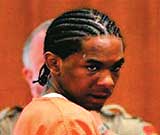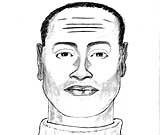| AMERICAN COLLEGE CAMPUSES |
| INDIAN STUDENTS:
GROWING INSECURITY |
|
| |
|
Once they were every Indian student’s dream destination, but after a series of murders of scholars from India, American campuses are getting an F for safety
|
|
By Rakesh K. Simha
|
| |
When Akkaladevi Srinivas left for the US in 2002 armed
 with a degree in
medicine, he promised his family he would come back and set up a modern hospital in his native Korutla in northern Andhra Pradesh. It
seemed yet another NRI success story was beginning to take shape. Six years down the line, that dream had gone horribly wrong. On March 1 this year, the 27-year-old, who was doing a post-graduate course in internal medicine at Mercy Hospital in Scranton, Pennsylvania, was found dead in a pool of blood in his apartment with multiple stab wounds on his neck. with a degree in
medicine, he promised his family he would come back and set up a modern hospital in his native Korutla in northern Andhra Pradesh. It
seemed yet another NRI success story was beginning to take shape. Six years down the line, that dream had gone horribly wrong. On March 1 this year, the 27-year-old, who was doing a post-graduate course in internal medicine at Mercy Hospital in Scranton, Pennsylvania, was found dead in a pool of blood in his apartment with multiple stab wounds on his neck.
While initially it seemed a homicide, detective Pat Tobin of the Scranton police later claimed Srinivas had committed suicide. “A note found scribbled on a mirror in Srinivas’ apartment said he was taking his own life,” said Pardeep Bansal a colleague. But according to crime investigators, a person wishing to commit suicide would try a far easier method than try stabbing his own neck. Besides the problem of not getting enough leverage, it would take a mentally deranged person to try that. And clearly, Srinivas wasn’t one.
|
| Akkaladevi Srinivas came from a well-to-do family and did not suffer from depression or any other problems. That’s why his murder looks so suspicious |
The apartment where Komma and Allam were murdered sits on the edge of the campus, close to one of Baton Rouge’s highest crime areas |
|
| |
| LIVES CUT SHORT |
 |
 |
March 1, 2008
Allam Kiran Kumar
A doctoral student in chemistry, his body was discovered by his pregnant wife. Was shot twice in the head. Investigations: have hit a dead end
|
December 13, 2007
Chandrasekhar Reddy Komma
A doctoral student, Komma was strangled with a computer cable. Was then shot twice in the head. Investigations: have hit a dead end
|
|
|
 |
 |
December 13, 2007
Akkaldevi Srinivas
He left a suicide note but experts say it’s not easy to stab onself in the neck, and that too repeatedly. Investigations: no progress
|
January 18, 2008
Abhijit Mahato
A 29 year-old student at Duke, Mahato was found shot dead in his apartment in Durham, N.C. Investigations: 3 suspects held
|
|
|
INDIANS BY THE NUMBERS

250,000 Approximate no. of Indian students in the US at any given time
83,833 No. of Indians who joined US campuses last year; highest from any country
10% of US millionaires are Indian, says Merrill Lynch
1/3 of the engineers in Silicon Valley are of Indian descent, says Univ of Berkeley
2.5m is the Indian population in the US
130% is the rate at which the Indian population in the US grew from 1990-2000
40% of all Indians in the US have a master’s, doctorate or professional degree
15.5% of all Silicon Valley startups were founded by persons of Indian origin
|
|
| |
|
|
|
  The Suspects The Suspects
Laurence Alvin Lovette Jr, 17, during his first appearance in court on March 14, 2008. He is held without bond and charged with first degree murder of Abhijit Mahato of Duke University and first degree murder of North Carolina University student body president Eve Carson. Authorities have also charged Stephen Oates, 19, in Mahato’s killing and Demario Atwater, 21, in Carson’s death. |
|
|
|
That’s why the Scranton police’s assertion it was a suicide and not a murder is debatable. Srinivas was no green card grabber. He came from a well-to-do family and did not suffer from depression or any other problems. Srinivas’ sister and brother-in-law are both doctors settled in the US and his mother was staying with them. In fact, he was planning to return this year to get married. A brilliant graduate in medicine of the 1995 batch of Gandhi Medical College in Hyderabad, Srinivas had come for higher studies after completing his MS.
At the funeral back home in Korutla his parents, Anjaiah and Bhagyalakshmi, rubbished the Scranton police’s claims and said their son was not a coward to commit suicide. “Srinivas didn’t have any financial or personal problems,” said Anjaiah. “The police are trying to pass it as a case of suicide as they can’t lay their hands on any clues.”
To be sure, Srinivas wasn’t the first Indian student to be killed under mysterious circumstances in recent times. Indian students in the US have become targets of campus and street violence in recent months. In December, two PhD students from Andhra Pradesh—Chandrasekhar Reddy Komma of Kurnool district and Allam Kiran Kumar of Karimnagar district—were shot dead at Louisiana State University. Abhijit Mahato, a research student from Kolkata, was recently shot dead in his student apartment in North Carolina.
Students from India make up a large percentage of international students at US universities—around 250,000 Indians are studying in American colleges at any given time. Thousands of Indian students and doctors also make up a substantial proportion in American colleges and hospitals.
Frequent gun rampages on US campuses and murder of Indian students in the past couple of months has worried the Indian student community in the country even as they believe it to be a social phenomenon you have to take in your stride.
The apartment where Komma and Allam were murdered is part of a cluster of pale yellow cinderblock, three-story buildings, and sits on the edge of the campus, close to one of Baton Rouge’s highest crime areas. The complex has a tall fence separating it from the off-campus neighborhood, but the apartments have no gates or surveillance cameras. Residents say attempted breakins and holdups are common at the complex. What’s intriguing is robbery doesn’t seem to be the motive in any of the murders.
However, Indian students aren’t calling their travel agents for a one-way ticket back home, yet. Amit Gupta, an engineering graduate from UCLA and currently working in a US multinational in Fresno, says Indian students are a tough lot and there’s no real panic. “Many are indeed concerned, as they rightly should be, but nobody’s diving into the foxholes yet,” says the Panchkula-born Gupta, whose younger brother is planning to join Cornell next year.
Jayadev Shastri, a pharmacy student at an American university he’d rather not name, darkly hints at other reasons. “Unlike in the past, when most students came on scholarships, the Indians arriving in American campuses are fee-paying students who are quite well off, even wealthy,” he says. “A few of them are quite reckless and pretentious. All this sparks envy in other nationalities.” Shastri, who is from Kerala, says the number of Indian students pouring into American campuses could slow to a trickle if there are any more such incidents.
Not everyone takes that view. Partha Banerjee, a New York City-based professor and a board member of Brooklyn for Peace, a human rights organisation, says, “The primitive laws and dark-age social customs of America are responsible for the never-ending campus tragedies.”
Nowhere else in the world but in the US could an average person be able to purchase arms and ammunitions, shotguns or automatic rifles at supermarkets or the more than 80,000 licensed gun shops across the country. With rampant violence prevalent in America, aspiring students and the Indian immigrant community sometimes get in the line of fire.
Ravi Tej Kavalipati, president, Indian Student Association of LSU, says there is no evidence to prove these students were killed because they were Indians. “It could have been anyone that night, they just happened to be in the wrong place.
NIU police chief Donald Grady agrees there is no foolproof way to prevent such attacks. “I wish I could tell you there was a panacea for this kind of a thing, but you’ve noticed there’s been multiple shootings all over this country within the past six months,” Grady says. “It’s a horrible circumstance, and as much as we do it’s unlikely anyone would ever have the ability to stop an incident like this.”
Another sub-plot was the callous behaviour of India-born Bobby Jindal. In the immediate aftermath of the LSU attacks, repeated calls were placed to the Governor-elect by Indians asking for a thorough probe. Jindal had campaigned vigorously on a platform to crack down on crime, but Jindal said nothing and did nothing. Finally, after nearly a week of silence, Jindal released a statement through his press secretary expressing his condolences and confidence in local law enforcement in bringing the culprits to justice.
With the authorities clueless about the killers, and powerless to stop them, the student population is looking elsewhere. According to a report by the US-based agency, Open Doors, the annual enrolment rates of Indian students on Australian campuses has significantly outpaced those of American universities, clocking a growth of 30-40 per cent.
If it’s any consolation for those keen on pursuing higher education in the US, American institutions have in recent years covered themselves with a blanket of security in order to tackle terror attacks and random shootings. Police blotters, security and alarm systems, emergency corridors, they are all part of the current set-up in most colleges. While break-ins into residential areas are getting more and more common, universities are taking steps to clean up the area. Escort services are offered after dark, and emergency phones have been installed across campuses.
If that doesn’t stop the murders, America has yet another crisis looming.
|
| |
|
|
| |
|
|
|
April 2008
|
|


|
|
|
|